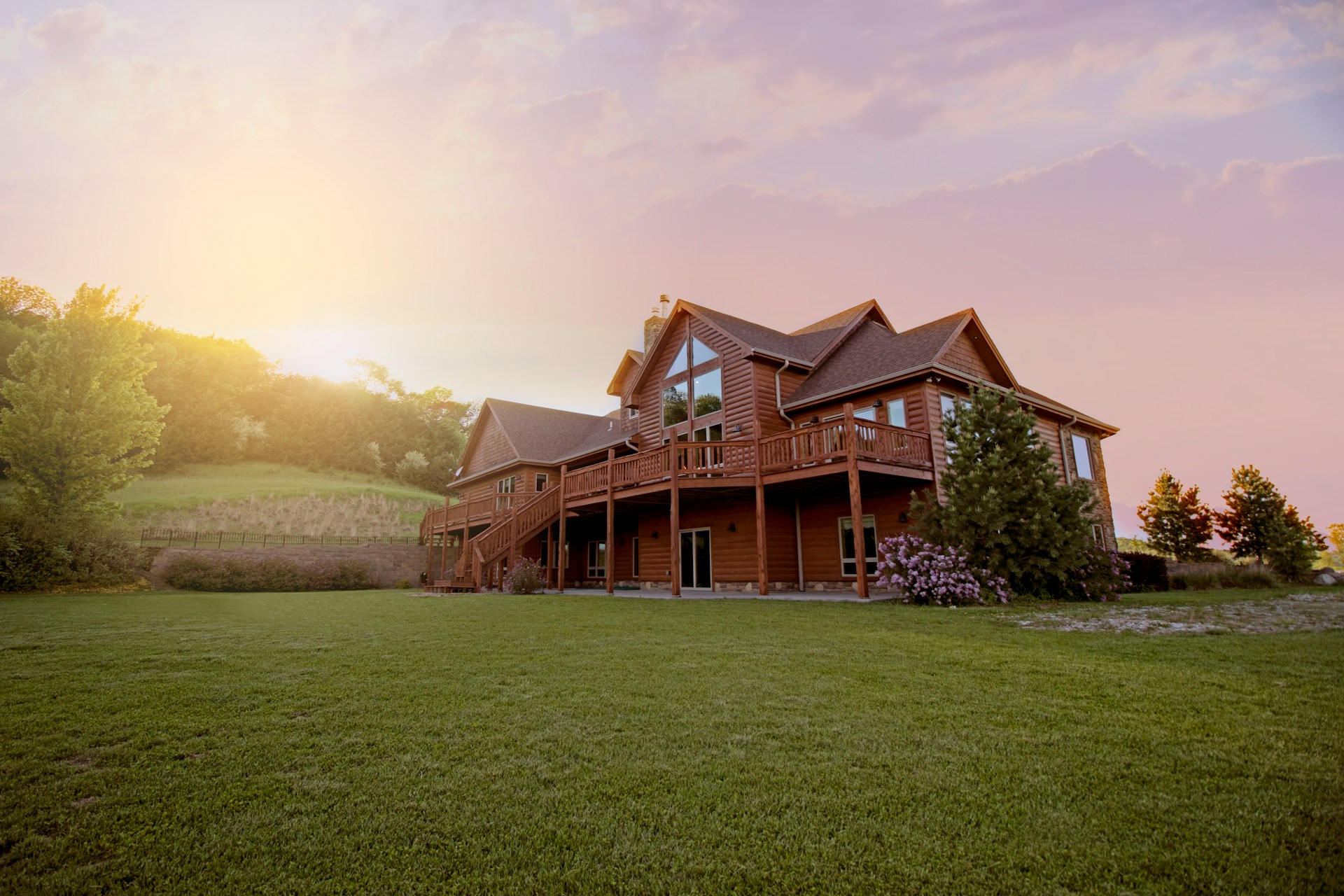Preparedness
Lions’ Lethal Mistake in Safari Park Tragedy

A tragic incident unfolded at the Taigan safari park in Russian-occupied Crimea, where a seasoned employee lost her life during a routine task. Leokadia Perevalova, who had dedicated nearly 17 years of her life to the park, was fatally attacked by lions while cleaning an enclosure.
The incident took place between 9:30 a.m. and 10 a.m. local time, as reported by the park’s owner, Oleg Zubkov.
According to Zubkov, the tragedy occurred because “the transfer sluice from the road enclosure to the inner one, where the cleaning was taking place, was not closed.” This oversight is puzzling, as the animals could not have caused it, and no individuals were nearby to intervene.
The employees who discovered Perevalova’s body were unable to provide any assistance due to the severity of her injuries.
The park, known for being one of Europe’s largest big cat breeding grounds, houses approximately 60 lions. Zubkov acknowledged that “the human factor of forgetfulness” contributed to the mishap but emphasized Perevalova’s value to the park, describing her as the “soul of our park.”
He further noted that lions, as top predators, “do not forgive mistakes.”
In response to the incident, the Moscow-installed Investigative Committee of Crimea and Sevastopol has initiated a criminal investigation, suspecting workplace negligence as a potential cause.
This tragic event underscores the inherent risks associated with working closely with wild animals, even in controlled environments.
While attacks by lions in zoos are rare, the stress of confinement can sometimes lead to unpredictable behavior. This was not the first time such an incident occurred; in 2018, a lion named Matthai killed intern Alexandra Black at the Conservators Center in North Carolina.
The lion managed to drag Black into a pen due to a blocked gate, leading to a fatal encounter despite attempts to tranquilize the animal.
Watch a local news report about the incident below:
Let us know what you think, please share your thoughts in the comments below.

Preparedness
5 Ways to Make Your Home Safer Immediately

A safe home does not require expensive upgrades or complicated systems. Many of the most effective changes are simple steps you can take right now. Whether you are preparing for a storm, a power outage, or everyday security issues, knowing how to strengthen your home quickly can give you immediate peace of mind. These five actions take only minutes, but each one cuts down real risks and helps protect the people and belongings you care about.
1. Improve Your Exterior Lighting
Poor lighting makes it easier for accidents and break-ins to happen. Adding bright bulbs to porches, pathways, and driveways is one of the fastest ways to reduce danger. Motion-sensor lights are inexpensive and use very little electricity. Good lighting keeps you from tripping in the dark and makes your home less inviting to anyone with bad intentions.
2. Check and Strengthen Your Locks
Many people assume their locks are secure until they actually test them. Walk through your home and check every door and window. Make sure each one closes fully and locks tightly. If any lock feels loose, replace it or tighten the screws. Installing a simple deadbolt on exterior doors adds a major layer of protection. Even a small upgrade can stop forced entry attempts.
3. Remove Common Indoor Hazards
Home accidents often start with everyday items that people overlook. Clear walkways, secure loose rugs, organize power cords, and remove anything that blocks exits. Check that smoke alarms and carbon monoxide detectors work and have fresh batteries. A few minutes of hazard removal can prevent falls, fires, or smoke-related emergencies.
4. Create a Simple Emergency Plan
During a crisis, confusion and panic cause more harm than the event itself. Make a basic plan that covers where you will meet, how you will communicate, and which items you would grab in an evacuation. Keep a small emergency kit in an easy-to-reach spot. A clear plan allows you to act quickly instead of scrambling in the moment.
5. Reinforce Entry Points
Windows and doors are the first places that fail during break-ins and strong storms. Adding simple reinforcements helps keep your home secure. Install window locks or wooden rods to prevent sliding windows from opening. Secure your garage door by engaging the manual lock. Place a doorstop or wedge behind vulnerable doors for added strength. Small changes can significantly increase resistance during emergencies.
Final Thoughts
Home safety starts with awareness and small improvements that add up quickly. By increasing light, checking locks, removing hazards, planning ahead, and reinforcing entry points, you create a safer environment for both everyday life and unexpected emergencies. You do not need expensive systems to protect your home. You just need a few smart steps and the habit of staying prepared.
Preparedness
10 Cheap Preps and Survival Tools You Can Buy for Under 10 Dollars

You do not need a huge budget to build a reliable emergency kit. Some of the most useful survival items are inexpensive, simple, and easy to find at any hardware store, dollar store, or online. For under 10 dollars, you can add tools that keep you warm, help you navigate darkness, protect your supplies, and give you an advantage when a crisis hits. Survival does not start with expensive gear. It starts with smart choices that give you options when you need them most.
Here are ten low-cost essentials that can make a real difference in any emergency.
1. LED Flashlight
A basic LED flashlight is one of the most important tools you can own. Even small models provide strong light, last a long time on batteries, and fit easily into a pocket or bag. In any power outage, losing visibility is the first major challenge. A cheap flashlight solves that instantly.
2. Waterproof Matches or a Butane Lighter
Fire is essential for warmth, light, boiling water, and morale. Waterproof matches or a simple butane lighter cost very little and work in nearly any weather. Keep several in different locations, such as your car, kitchen, and emergency kit.
3. Emergency Mylar Blanket
These thin, reflective blankets trap body heat and prevent hypothermia. They weigh almost nothing and fold down to the size of a wallet. Mylar blankets are used by hikers, first responders, and disaster teams because they work. At under a dollar each, they are one of the best survival bargains you can buy.
4. Duct Tape
Duct tape might be the most versatile tool in survival. You can patch a tarp, repair a tent, secure a bandage, create a splint, seal drafts, or waterproof containers. A small roll is cheap, portable, and useful in almost every emergency situation.
5. Plastic Tarps
A simple tarp can act as shelter, roof patching, ground cover, rainwater collection, shade, or wind protection. Even lightweight tarps create instant barriers between you and the weather. They are one of the most efficient budget tools for surviving outdoors or protecting your home.
6. Batteries
A flashlight is useless without power. Stocking AA or AAA batteries ensures your lighting, radio, or small devices continue to work during blackouts. Rotating your batteries once a year keeps them fresh and ready.
7. Water Storage Containers
Clean water is the first priority in any emergency. Inexpensive plastic jugs or collapsible water containers allow you to store several gallons safely. Keeping extra containers around means you can fill them quickly before storms or boil-water advisories.
8. Basic First-Aid Supplies
Under 10 dollars, you can build a simple first-aid kit that includes bandages, antiseptic wipes, gauze, tape, and pain relievers. Minor cuts and infections become serious problems during emergencies. A small, inexpensive kit prevents these issues from getting worse.
9. Candles or Tealights
Candles are a cheap and reliable backup source of light. They are easy to store and last a long time. A few tealights can illuminate a room and provide comfort when power is out. Just use them safely and never leave them unattended.
10. Multi-Tool or Pocket Knife
Many budget multi-tools cost under 10 dollars and still offer blades, screwdrivers, scissors, and small pliers. They are not as rugged as premium tools, but in a crisis, having even a basic multi-tool is far better than having nothing.
Final Thoughts
Building a survival kit does not require expensive gear or specialty equipment. These ten tools cost less than a takeout meal, yet each one adds real strength to your ability to handle emergencies. Start with the basics. Add a few items each month. Over time, you will build a dependable, low-cost emergency setup that prepares you for storms, outages, travel problems, and unexpected challenges.
Off The Grid
10 Foods That Could Save Your Life When Crisis Hits

When a real emergency strikes, the first thing most people lose is access to fresh food. Storms shut down roads, power outages spoil everything in the refrigerator, and grocery shelves empty faster than anyone expects. Having the right foods stored can turn a dangerous situation into something you can manage calmly. The key is choosing items that last a long time, do not require refrigeration, and can give your body the energy it needs when conditions get tough.
Here are ten simple, affordable foods that could literally keep you alive when everything else disappears.
1. Canned Beans
Canned beans are one of the most complete emergency foods on the planet. They are packed with protein, fiber, and slow-burning carbohydrates. They can be eaten cold right out of the can if there is no power. Black beans, kidney beans, chickpeas, and pinto beans all work the same way.
2. Rice
Rice is a survival classic because it lasts for years, stores easily, and gives steady energy. White rice stores longer than brown rice, but both are excellent. Combined with beans, rice becomes a complete meal that keeps you full and focused during tough situations.
3. Peanut Butter
Peanut butter is calorie-dense, shelf-stable, and requires zero preparation. A single spoonful provides fat, protein, and fast energy. It can stay good for months after opening if stored in a cool place. In any emergency, peanut butter becomes a go-to survival powerhouse.
4. Canned Meat
Tuna, chicken, salmon, and Spam all offer long-lasting protein that does not require cooking. Canned meat keeps hunger away and helps your body stay strong when facing stress. Always keep a few cans in your emergency kit or pantry.
5. Oats
Oats are cheap, filling, and versatile. You can eat them hot if you can boil water or cold by soaking them for a few minutes. They give long-lasting energy and help keep your stomach comfortable during stressful times.
6. Shelf-Stable Milk
Powdered milk or boxed shelf-stable milk are lifesavers when refrigeration is gone. They provide calcium, protein, and comfort. Powdered milk lasts the longest and takes up the least space, making it an ideal survival-food staple.
7. Pasta
Pasta stores extremely well and is easy to prepare. Even if you cannot fully boil it, soaking pasta in hot water will make it soft enough to eat. It is a reliable way to stretch meals and keep energy levels steady.
8. Honey
Honey lasts forever. It never spoils and can still be eaten decades later. It boosts energy, soothes sore throats, and adds flavor to otherwise bland survival meals. A small jar goes a long way and can lift morale when days feel long and stressful.
9. Canned Vegetables
Fresh produce is the first thing to disappear during a crisis. Canned vegetables fill that gap with vitamins and hydration. Corn, peas, mixed vegetables, and green beans all store well and give your body the nutrients it normally gets from fresh groceries.
10. Water
No food matters without water. Store at least one gallon per person per day. Bottled water, water jugs, and water purification tablets all belong in your emergency kit. If you have space, keep extra. When the tap stops working or becomes unsafe, clean water becomes the most valuable survival item you own.
Final Thoughts
These ten foods are not fancy and they are not expensive, but they can keep you alive when normal life breaks down. Building a simple survival pantry does not require fear or extreme prepping. All it takes is a few smart choices, a little extra storage space, and the peace of mind that comes with knowing you can take care of yourself no matter what happens outside.
-

 Tactical2 years ago
Tactical2 years ago70-Year-Old Fends Off Intruder with Lead-Powered Message
-

 Tactical2 years ago
Tactical2 years agoVape Shop Employee Confronts Armed Crooks, Sends Them Running
-

 Preparedness1 year ago
Preparedness1 year agoEx-Ballerina’s Guilty Verdict Sends Tremors Through Gun-Owner Community
-

 Off The Grid2 months ago
Off The Grid2 months ago10 Foods That Could Save Your Life When Grocery Shelves Are Empty
-

 Preparedness1 year ago
Preparedness1 year agoGood Samaritan Saves Trooper in Harrowing Interstate Confrontation
-

 Preparedness1 month ago
Preparedness1 month ago5 Things You Should Always Carry During a Winter Storm
-

 Preparedness6 months ago
Preparedness6 months agoHow Much Gasoline Should You Store for Emergencies?
-

 Nature and Wildlife2 months ago
Nature and Wildlife2 months ago10 Survival Skills You Should Learn Before You Need Them
glenn
October 25, 2024 at 11:25 pm
After doing the same procedures taking care of the animals, people get lack and this is what happens or their thoughts are on something else instead of the issue at hand.
Timothy
October 28, 2024 at 5:03 pm
many are questioning why our society lets other animals (criminals/savages) out of their cages, to be allowed back on the streets where the “law abiding” are? Putting them ay risk? Then wanting to take their 2nd amendment away? How foolish is THAT? Only a slave would pay taxes for that kind of society.